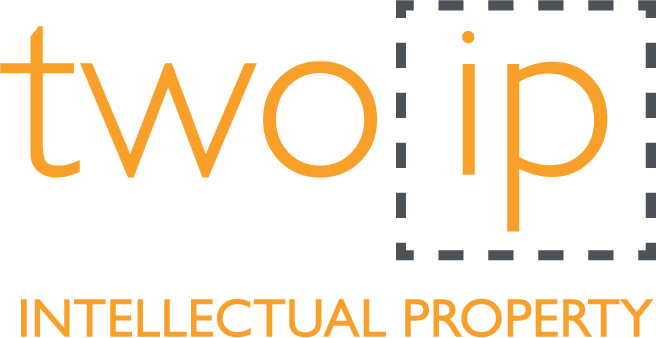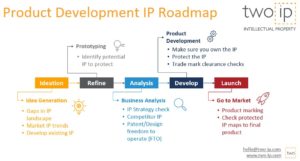
Following the Emotional Perception decision, did the IPO miss an opportunity to clarify its guidelines for examining AI and artificial neural network implemented inventions? And what takeaways can we learn from the July Appeal Decision which found in favour of the UK IPO?
Patent attorney Coreena Brinck writes an updated article following the appeal decision which was published on 19th July 2024, and found in favour of the UK IPO. Of her original article (which can be read here), Coreena says ‘I was torn at the time of writing, as whilst I really wanted the UK IPO to become more favourable to patenting AI technology, I didn’t think the decision would survive the appeal’.
So what can we learn from the appeal decision?
I have worked for many years as a European and UK patent attorney with computer-implemented inventions, but mostly file with the European Patent Office. Why? Well, the UK Intellectual Property Office has a fundamentally different approach to how claims to inventions which are implemented using a computer-program are searched and examined.
As most will know, after a patent application is filed with a patent office, that patent office will review the claims (which define the legal rights sought) so that they only relate to an invention which meets the requirements for patentability. This is usually done in a strict sequence – a search is performed, and then the application is examined based on what prior art was found in the search. Most inventors are aware that to be patentable an invention has to be novel, inventive, and capable of some form of industrial applicability. In addition, however, the subject-matter of the claims must be eligible subject-matter for patent protection. In the UK (and most European) patent offices this means that the invention claimed must be more than a computer-program per se, and must be more than a mathematical method per se, amongst other objections.
The reason why the EPO is favoured over the UK IPO for computer implemented inventions for which UK patent protection is sought, is that the UK IPO search examiner can decide there is no invention that meets the UK IPO’s tests for patentable subject-matter BEFORE they search, meaning they don’t need to conduct a search, and the applicant has no opportunity to argue in the examination phase why the Examiner may be wrong and why the invention as claimed should be considered to have patentable subject matter. The only way to address this is to appeal against the UK IPO search examiner’s opinions, which considerably escalates costs at this early stage of the proceedings (searches are usually conducted a few months after filing, so that the search results can be used as the basis for making foreign filing decisions within the priority year).
In contrast, at the EPO, a search will usually be performed if there are technical means involved (which there are inherently for any computer-implemented method etc) and then during examination if the Examiner considers the invention to not meet the EPO’s tests for patentability, the applicant has an opportunity to defend why the invention should be found patentable.
Last year, an applicant for a UK patent relating to music selection using an ANN system appealed against the UK IPO’s rejection of their application. They argued that it did meet the required standard for the subject-matter to be found patent eligible. They lost against the UK IPO’s Hearing Officer, but appealed successfully against the Hearing Officer’s decision. The UK IPO then appealed this successfully and we are now back to the original status quo in terms of UK patent practice. But can we learn anything from this regardless of the long term outline?
I think that unfortunately this was not the best case to really test the UK IPO and bring about a change in practice, but things were looking very optimistic at one point. In the appeal from the UK IPO Hearing Officer’s decision, Emotional Perception AI Ltd v Comptroller-General of Patents, Designs and Trade Marks [2023] EWHC 2948 (Ch), the High Court decision found in favour of the applicant and overturned the decision by the IPO hearing officer to refuse a patent application on the basis the AI-related invention was nothing more than a computer program per se and so formed unpatentable subject matter.
The Emotional Perception decision which was then handed down by the High Court on 21 November 2023 led to a fundamental revision of the IPO practice as examiners were no longer able to treat ANN inventions as excluded subject matter under the computer program per se objection. This practice change has since been recalled. This is a huge shame.
Now despite the announcement by the UK government in August 2024 that AI funding will be hugely cut back, the UK is likely to increasingly rely upon innovative AI and ML technology to boost our economic recovery.
The patent rights obtained in the UK as a result of taking either the UK IPO or EPO filing route successfully (assuming the European patent is validated in the UK after grant) legally have the same effect so far as protecting an invention in the UK. The EPO route is more expensive, but once other factors such as the risk of not having the invention searched and needing to file an appeal to progress a patent application for an invention involving a CII has been factored in, and possibly not getting the application to succeed even then, the EPO is usually much cheaper. In fact, it is a great bargain as it gives the opportunity to validate the European patent once allowed in multiple EU countries as a Unitary Patent as well as individually in non-EU countries like the UK and Norway, which are also members of the European patent convention. However, the official fees along in Europe are around a factor of 5 times more expensive, and that is before any excess claims fees have been factored in. This is a big issue for some computer implemented inventions involving AI, as there may be a desire to protect a product including the AI system, the AI system, the training method, the operational methods etc – and so it can be useful if some idea of whether these are patentable is obtained before the UK IPO. At the UK IPO, up to 25 claims to be searched before excess claims fees (at a reasonable £20 per excess claim over 25) are incurred. In contrast, excess claims fees for European patents kick in for the 16th claim onwards, and cost around 275 Euros per claim up to the 50th claim, and are considerably more than this (currently 685 Euros) for the 51st claim onwards.
So I can’t but feel here in the UK we are at a disadvantage compared to elsewhere in Europe where national patent offices more closely follow the European Patent Office (‘EPO’) approach to patent examination of computer-implemented technology. The patent offices in Nordic states including Sweden and Denmark (and Luxembourg) are some examples of national patent offices which do excellent search and examinations which are more like the EPO in their analysis for a very reasonable cost.
Of course, whilst these national offices can be used by UK start-ups and SMEs as an alternative to the IPO, and I have filed and prosecuted various CII and AI inventions with Nordic patent offices, I can’t help but feel here in the UK we should have our own national route available for small inventors and start-ups to follow if they can’t afford the far higher cost of filing for patent protection before the EPO.
So, as things stand, the EPO still is, in my opinion, the favoured route for obtaining patent protection in the UK for many forms of computer-implemented invention simply because the EPO approach for assessing patentable subject matter is more predictable for inventions involving AI although this may change when the Court of Appeal Court issues its decision. Alternatively, consider first filing with the Swedish patent office, for example, for a search (and examination) on a par with the European patent office but for a fraction of the price. This can then be used to make a decision about whether to first file with the EPO later or not, for far less cost.
When I read through the Emotional perception judgements, several things stood out. Firstly, I felt there was something rather nebulous being grasped by the High Court judge which was somewhat overshadowed by several of the subsequent arguments. This was that in the Emotional Perception invention, there were two ANNs, one training the other.
So when the UK judge made certain comments about how the technical effect of one ANN could be considered a trained ANN, I believe he was talking about the output from on ANN being used to cause another (trained) ANN to come into existence. In my opinion, that is (arguably) something technical. BUT, if both trained ANNs are in effect part of the same overall computational model, it will not necessarily help with the UK IPO, as the tests applied by the UK IPO are very different. Moreover, what is being fundamentally being achieved outside the computer system is very important.
In the successful appeal by the UK IPO, the UK IPO Comptroller was able to overturn the previous decision by the HC, on all four of the following grounds:
i. The HC Judge erred in holding that the exclusion from patent protection for a “program for a computer … as such” was not engaged;
ii. The HC Judge was wrong to rely on the Appellant’s ‘concession’ that a hardware ANN was a computer but it was a computer with no program, or words to that effect;
iii. The HC Judge was wrong to exclude the consideration of the mathematical model exclusion; and
iv. The HC Judge was wrong to hold that the claimed invention involves a substantive technical contribution.
The reasoning given in the judgement, was that subject only to the step of sending a recommended file to a user, the whole remainder of the contribution made by the invention (where the contribution referred to here is the contribution for inventiveness based on the UK’s approach to assessing inventive step under Aerotel Ltd V Telco Holding Ltd [2007]), was consisted of a program for a computer and nothing more.
In this case, the function of the computer program was considered to be providing improved file recommendations (for music files). The appeal by the HC was considered to hinge, once the correct characterisation of the function of the computer had been found, which was stressed as being critical to determining patentability, on whether the Hearing Officer was right to find the subject-matter exclusion applied, because the beneficial effect the file recommendation was of a subjective and cognitive nature, or whether the HC Judge was right to hold that the exclusion did not apply, because even though what made the file recommendation better was not technical criteria (because the semantic similarity is a subjective matter), the ANN had reached that result by “going about its analysis and selection in a technical way”.
In the end, the appeal by the UK IPO was successful as it was concluded that the semantic similarly of the files was found to what led to them being recommended, which was considered to not be technical. Whilst there is UK patent case law which might have been helpful regarding patentability when technical information was made available outside a computer system, in this case, the fact that there was an external transfer of data (the file recommendation) did not help as the information made available was considered not technical for the same reason: “What matters is the correct characterisation of the data being transferred …”
A fundamental takeaway from this judgement in my opinion, is that it stresses correctly characterising the function of a computer program may be critical in terms of whether it is making a technical contribution or not, which may ultimately affect its patentability.
TAKE AWAYS
Patenting AI systems requires in most patent jurisdictions working out what technical benefit or contribution to the prior art is being made by the ANN. This means not just describing what the ANN is being used for, but how it is structured to achieve that and any benefits of the particular AI model architecture used in that respect. These benefits may arise, for example, from the type of model used, or its learning rules for updating for weights, or from the sort of data is used to train an ANN, or how the output from the ANN is applied in a real-world context.
If there are more than one ANN, what each ANN does should be described, particularly if there are different technical effects/benefits which may be either directly or indirectly attributable to one of the ANNs. So, for example, if you have two or more ANNs, each may need different data, to be differently trained, for different amounts of time, and with different levels of confidence/accuracy. If the result of training one ANN affects how another ANN is trained, and if the collective training will have an internal effect on the accuracy of the system output for example, these should also be explained. So rather than just summarise what technical character the system output has, it can be useful to add a breakdown of the contributions from each ANN to that technical character to the description. This does, of course, mean that some AI specifications are larger than patent specifications for other types of invention, as there is simply more to describe to present the invention in all its facets in the best possible way to allow a patent to be granted. It also means that AI drafting can take longer and this means it is more of an expensive process. Given all this though, a good AI patent specification with claims could be infringed by competitor’s technology may be incredibly reassuring to have if there is any likelihood of having to disclose your AI systems architecture to the EU AI office under the terms of the new EU AI act.
If you are interested in patenting any AI technology, do reach out to me for a preliminary discussion.
If you would like further advice or support, please get in touch via our website here or email us at hello@two-ip.com





